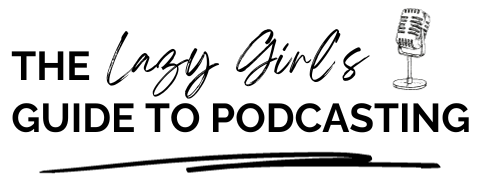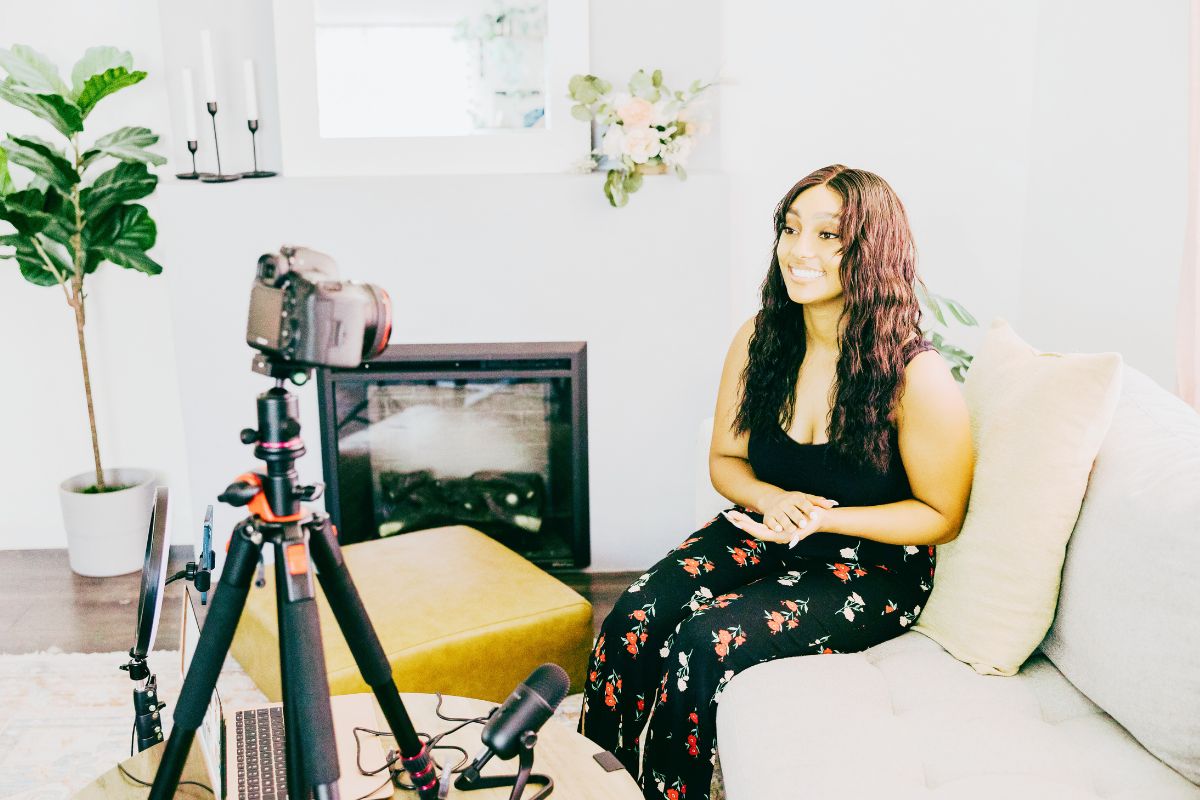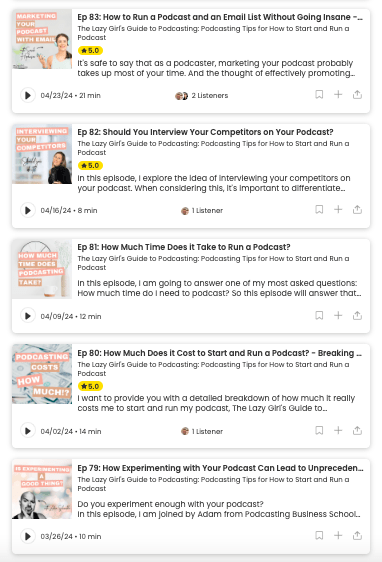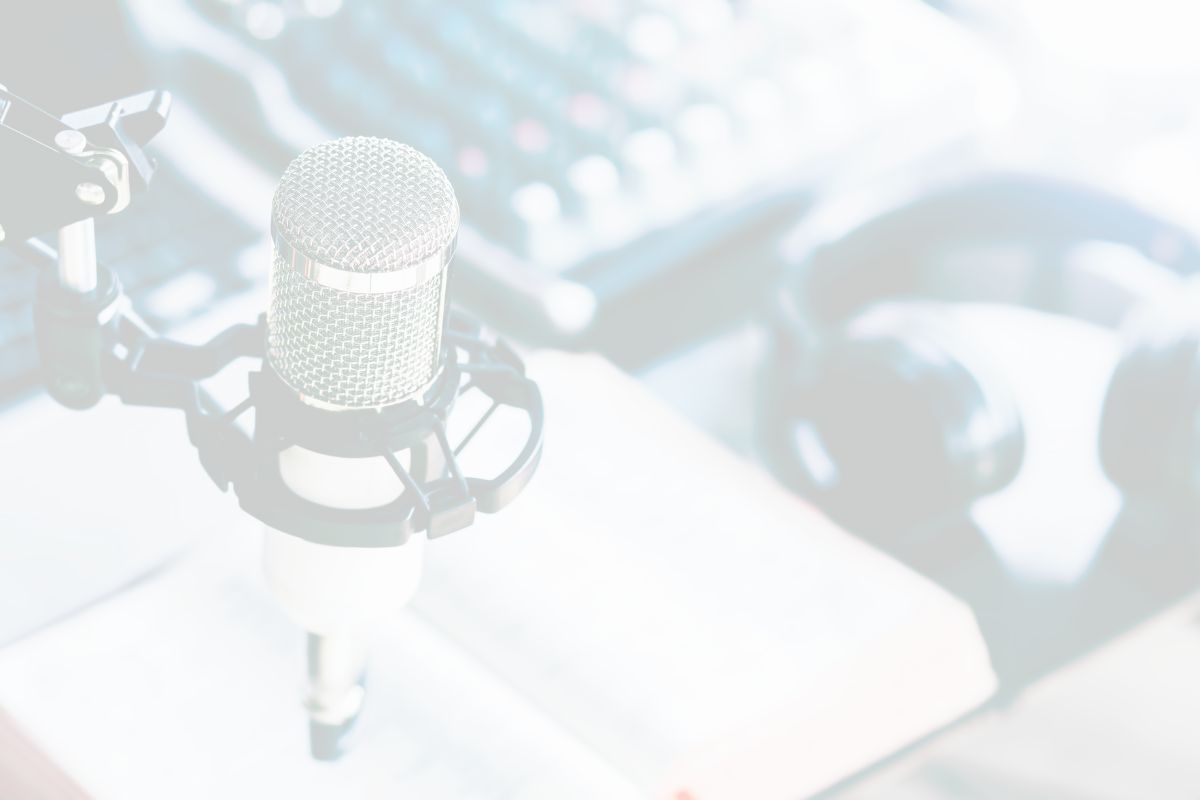This post may contain affiliate links. If you click on an affiliate link and make a purchase, I may earn a small commission at no additional cost to you. For more information, see our Privacy Policy.
In today’s digital age, content creators have a plethora of platforms to choose from when it comes to growing their brand. And two of the most popular platforms are YouTube and podcasting. If you’re thinking of starting a YouTube channel or a podcast, you’ve probably wondered to yourself which is best. In fact, even if you already have a YouTube channel or a podcast, my guess is that by landing on this post you’re wondering which is best for growing your brand in the podcasts vs YouTube debate.
Both offer unique advantages, but which one is better for your brand?
YouTube is a video-sharing platform that has become the second-largest search engine in the world, with over 2 billion monthly active users.
On the other hand, podcasting has exploded in popularity over the past few years, with an estimated 3-4 million podcasts available worldwide.
It’s no wonder that many content creators are left wondering which platform is better for growing their brand. So, in this article, we’ll take a closer look at the pros and cons of both YouTube and podcasting to help you decide which platform is best for your brand. Let’s dive in!
Understanding YouTube and podcasting
Before we dive into the benefits of YouTube and podcasting, let’s first understand what these platforms are all about.
YouTube
YouTube is a video-sharing platform that allows users to upload, share, and view videos. It was created in 2005 and has since become a household name.
YouTube is not just a social media platform, it’s also a search engine. This means that users can search for videos on topics they are interested in and find content creators who have created videos on those topics. It is estimated that there are more than 500 hours of video uploaded to YouTube every single minute. For context, that’s nearly 21 days of continuous video content being uploaded per minute of the day. Now that is a lot of content being generated and a lot of noise for you to try and stand out in!
Podcasting
Podcasting, on the other hand, is a digital audio file that is made available on the internet for download. Podcasts are typically episodic and can be downloaded and listened to on various devices, including smartphones, tablets, and computers. They are hosted on a podcast hosting platform that then pushes new episodes to podcast directories via an RSS feed. Hosting platforms include Buzzsprout, Libsyn, and Anchor. Directories include Apple Podcasts, Spotify, Google Podcasts, and Amazon Music.
Finding out how many podcast episodes are published per day wasn’t as easy to find as the YouTube stats. But, we did find some data that suggested that 109,706 podcast episodes are published every 3 days. Suddenly, the world of podcasting seems must less competitive, doesn’t it?
Podcasts can cover a wide range of topics, including news, education, sports, entertainment, and more. They are a great way for content creators to share their thoughts and ideas with their audience in an intimate and engaging way.
Benefits of YouTube for brand growth
YouTube has several benefits when it comes to growing your brand.
Searchability
First and foremost, YouTube is the second-largest search engine in the world, after Google. This means that creating videos on topics that people are searching for can really help you reach a wider audience.
YouTube is owned by Google, which means that videos uploaded to YouTube are more likely to appear in Google search results. This can significantly increase your brand’s visibility online.
Showcase brand personality
Another benefit of YouTube is that it allows you to showcase your brand’s personality. Videos allow you to show your audience who you are, what you stand for, and what your brand is all about. This can help you establish a connection with your audience and build trust with them.
Building a community
Additionally, YouTube allows you to engage with your audience through comments and live streams, which can help you build a community around your brand.
Whilst Spotify has now introduced its question-and-answer feature for podcasts, this is still in its infancy and doesn’t offer the same level of conversation and interaction as YouTube comments do. Also, this is a Spotify-only feature. On other podcast directories, whilst listeners can leave reviews there isn’t a way to get a conversation going and respond to these reviews. Podcasters, therefore, need to encourage their listeners to join a conversation elsewhere, for example, Instagram DMs or a Discord group.
Monetisation opportunities
If you’re looking for monetisation of your word, YouTube has its Creator Fund which you can work towards joining.
On the other hand, there is no fund in the same way for podcasts. You need to apply to different ad platforms and gain sponsorships if this is the route for monetising your podcast that you want to take.
Benefits of podcasting for brand growth
Podcasting also has several benefits when it comes to growing your brand.
Establish yourself as an expert
First and foremost, podcasts are a great way to establish yourself as an expert in your field.
By sharing your thoughts and ideas on a particular topic, you can position yourself as a go-to source for information on that topic. You have complete ownership over your show, unlike YouTube which owns your videos and content. Basically, if YouTube were to disappear tomorrow then your content is lost. But if Apple Podcasts were to disappear, your podcast content on Spotify would still remain.
Reach a wide audience
Additionally, podcasts allow you to reach a wider audience.
Unlike video content, podcasts can be consumed while doing other activities, such as driving, exercising, or working. There is a certain level of intimacy that is created when listening to a podcast.
After all, if someone is listening to you whilst driving, you are in their ears for the length of your episode (and maybe the next too!). It’s harder to click off a podcast when you’re driving or doing the dishes, so, like listening to the radio of music, you’re building a stronger connection with your listener.
Build a loyal audience
Another benefit of podcasting is that it allows you to build a loyal audience. Podcast listeners tend to be highly engaged and loyal to the podcasts they listen to. This means that if you can create high-quality content that resonates with your audience, you can build a loyal following that will support your brand and help you grow.
You don’t have to show your face if you don’t want to
Probably one of the biggest benefits of having a podcast over YouTube is that you don’t need to show your face if you don’t want to. Around 80% of podcasters DON’T record video as part of their podcast workflow. Meaning that you can turn up and record however you want and feel no pressure to look or present yourself and your surroundings in a certain way.
Side note: This totally worked for me when I started The Confident CEO Podcast. I started that podcast with a 3-month-old by my side, a messy bun on top of my head, and the classic look of a mum with a newborn who’d been up for most of the night. Whilst some might have a different opinion, this is not how I wanted to appear on YouTube for the world to see and so audio-only podcasts were the way forward for me at that time.
Podcasts vs YouTube – Pros and cons comparison
Now that we’ve looked at the benefits of both YouTube and podcasting, let’s compare the pros and cons of each platform.
YouTube pros:
- Large user base. Quite simply, more people use YouTube than Apple Podcasts, Spotify, or any other podcast directory out there. Therefore, whilst there’s more chance of being lost in the noise, there are also more people to potentially reach and to find you.
- High engagement through comments and live streams. At present, there is no way of going live with your podcast on a traditional podcast directory.
- High visibility in search results. As we’ve already said, YouTube is the second biggest search engine in the world. And with that it means that you’re more likely to be found in the search results. Whilst podcast directories technically are able to be used as a search engine, more people will type ‘How to create a podcast’ into YouTube than they are into Apple Podcasts.
YouTube cons:
- Video content can be time-consuming to create. Depending on your setup, preparation, and aesthetic, video can take longer than to create than audio for podcasting.
- Video production can be expensive. For a podcast, you just need a microphone. For YouTube you need something to record video as well. Arguably, you can use your smartphone for both functions, but when recording high-quality video you may quickly want to upgrade to a camera and accessories, all of which can add up.
- High competition for views and subscribers. Numbers for YouTube and podcasting work very differently. Whilst people are used to seeing thousands if not millions of views on a YouTube video, the average podcast will get less than 29 downloads in its first 7 days of release. Also, there are way more people on the platform and so competition for views and subscribers are a lot tougher than listeners for your podcast.
Podcasting pros:
- Low barrier to entry. You can start a podcast with just your iPhone or another smartphone. You don’t need to be an expert in your field and there’s less competition with other channels.
- Can be consumed while doing other activities. Your audience doesn’t need to solely be watching your channel to engage with you and can listen whilst driving, doing household chores, commuting, or exercising.
- Highly engaged and loyal audience. Podcast audiences tend to be very loyal to the podcasts that they listen to. They are tuning in because they want your opinion and thoughts on your genre and topic.
Podcasting cons:
- Limited visibility compared to YouTube. YouTube has much more discoverability; from being more likely to be shown in Google search results to being featured in the sidebar when your audience are watching another video, it’s easier to get more visible on YouTube than podcasting.
- Less opportunity for engagement compared to YouTube. As we’ve already discussed, there’s less opportunity for conversing with your audience via a podcast and you need to encourage listeners to engage with you on other platforms.
- Audio quality can be a challenge for beginners. Whilst I firmly believe that you don’t need the most expensive microphone ever to podcast, you do need decent audio quality, meaning that editing and setup can take a bit of learning when you’re starting out.
Best practices for brand growth
Regardless of if you decide that YouTube or podcasting is the platform for you, there are several best practices you should follow to help grow your brand.
First and foremost, you should focus on creating high-quality content. This means investing in good equipment and practising your video/audio production skills. Additionally, you should focus on creating content that is both informative and entertaining. This will help you engage your audience and keep them coming back for more.
Another best practice for YouTube is to optimise your videos for search. This means including relevant keywords in your video titles, descriptions, and tags. Additionally, you should focus on creating eye-catching thumbnail images that will help your videos stand out in search results.
For podcasting, be sure to promote your podcast on social media and other platforms. This will help you reach a wider audience and attract new listeners. Additionally, you should focus on building a community around your podcast by engaging with your listeners and asking for feedback.
Integrating YouTube and podcasting for maximum brand growth
While YouTube and podcasting offer unique advantages, integrating the two can help you maximize your brand’s growth.
So, before we round off this post, let’s dive a little into how you can show up on both YouTube and your podcast with very little extra effort.
Side note: I never advocate burning yourself out by ‘being everywhere.’ If you’re struggling with being in multiple places, it’s better to knuckle down and be really good on one or two platforms than it is to be on more platforms and putting out mediocre content because of it.
For The Confident CEO Podcast, I have an automation set up in Repurpose.io where every time I upload a new podcast episode to Buzzsprout, Repurpose.io it generates an audiogram for the episode and posts it to my YouTube channel.
Here’s examples below of how each podcast appears on YouTube thanks to the Repurpose.io automation:
It does the same for The Lazy Girl’s Guide to Podcasting. Therefore, I can post my episodes to YouTube with no additional effort (and it took less than 5 minutes to set up the automation anyway).
You might want to record the video and audio when recording your episodes. In this case, you can upload the video to YouTube as you normally would with a video.
Here’s some examples of podcast episodes that I then published the video for YouTube:
> (opens in a new tab)”>Get your 14-day free trial with Repurpose.io >>
Have a go at what feels good for you. But remember, there is no pressure to appear with both a podcast and a YouTube channel if that doesn’t align with your brand or the stage your business or content is at this moment in time.
Conclusion
In conclusion, both YouTube and podcasting offer unique advantages when it comes to growing your brand.
YouTube is great for showcasing your brand’s personality and reaching a wider audience through search and engagement.
Podcasting, on the other hand, is great for establishing yourself as an expert and building a loyal audience. Ultimately, the platform you choose will depend on your brand’s goals and resources.
If you have the time and resources to create high-quality videos, YouTube may be the platform for you. If you prefer the intimacy and flexibility of audio content, podcasting may be the way to go.
Regardless of which platform you choose, following best practices and engaging with your audience will help you grow your brand and achieve success.
What do you think? Did I miss anything? Let me know in the comments!




